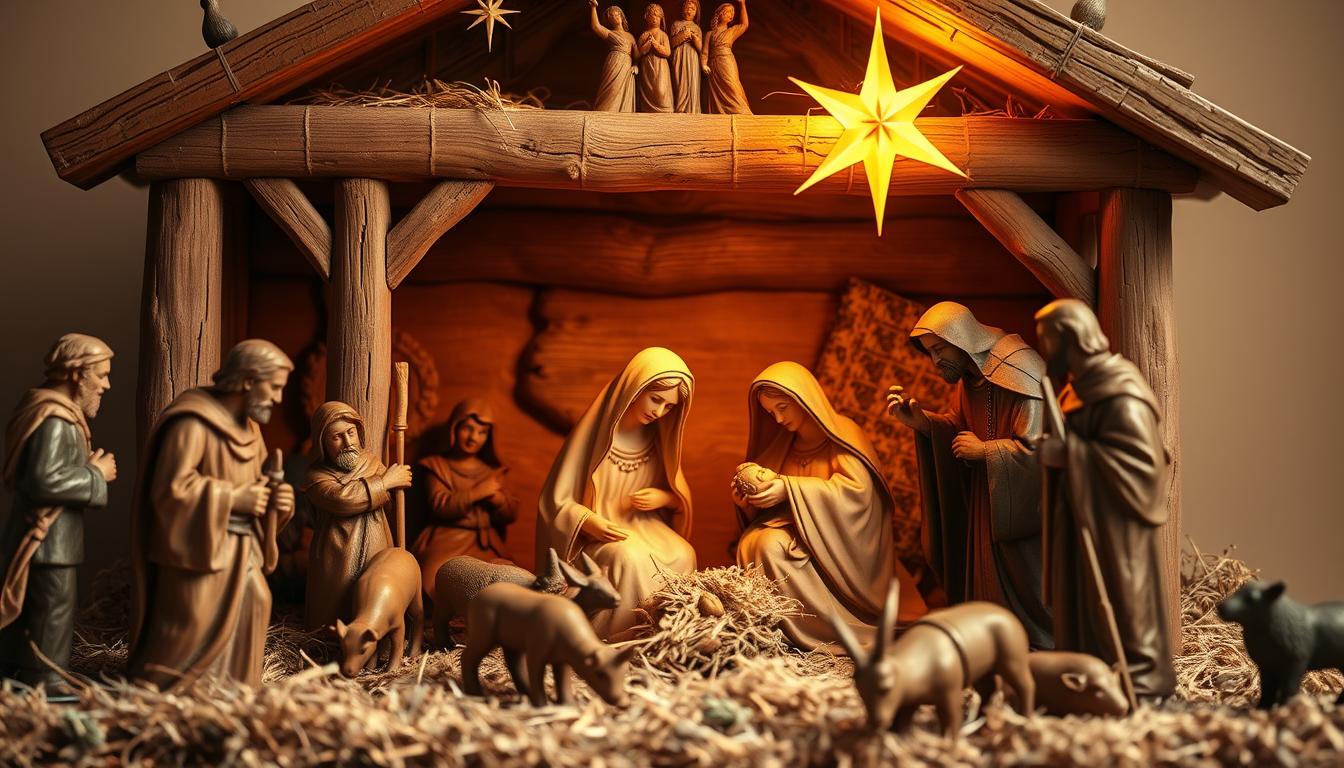As the holiday season gets closer, we’re reminded of what makes Christmas special. You might think of twinkling lights, the smell of pine, or the laughter of loved ones decorating. For many, the heart of Christmas is the traditional Italian presepio. These nativity scenes capture the story of Jesus’s birth, inviting you into a world of cultural heritage and warmth.
The presepio tradition is more than just a decoration. It’s a deep expression of love and hope that lasts through the ages. Each figure and detail in a presepio tells a part of the story. This craftsmanship has been handed down for centuries. Starting in the 13th century and evolving to today’s detailed miniatures, especially in Naples, presepios are a symbol of community and faith. They add depth and meaning to our Christmas, telling stories that touch our hearts.
Key Takeaways
- The Italian presepio tradition dates back to the 13th century.
- Neapolitan presepio scenes often showcase intricate representations of 18th-century society.
- Presepio sets blend biblical themes with local culture, showcasing diverse artistic influences.
- The tradition of nativity scenes varies globally, reflecting local customs and materials.
- Each presepio piece carries a story, enhancing the emotional connections to Christmas.
- DIY presepio projects can be a wonderful way to engage with family and tradition.
The Rich History of Presepio Sets
The story of presepio sets is deeply woven into Christmas nativity history. They date back to the 13th century. This Italian tradition shows the birth of Jesus with intricate displays. It merges culture, art, and spirituality, showing the values of Italian nativity traditions.
Origins of the Presepio Tradition
The practice of setting up nativity scenes in Italy started with simple, handmade displays. Families created their own presepi, each showcasing unique craftsmanship. These scenes often featured the Holy Family, shepherds, and angels. They were arranged to reflect the Christmas spirit. Nowadays, these traditions live on, with families passing down memories and figures through generations.
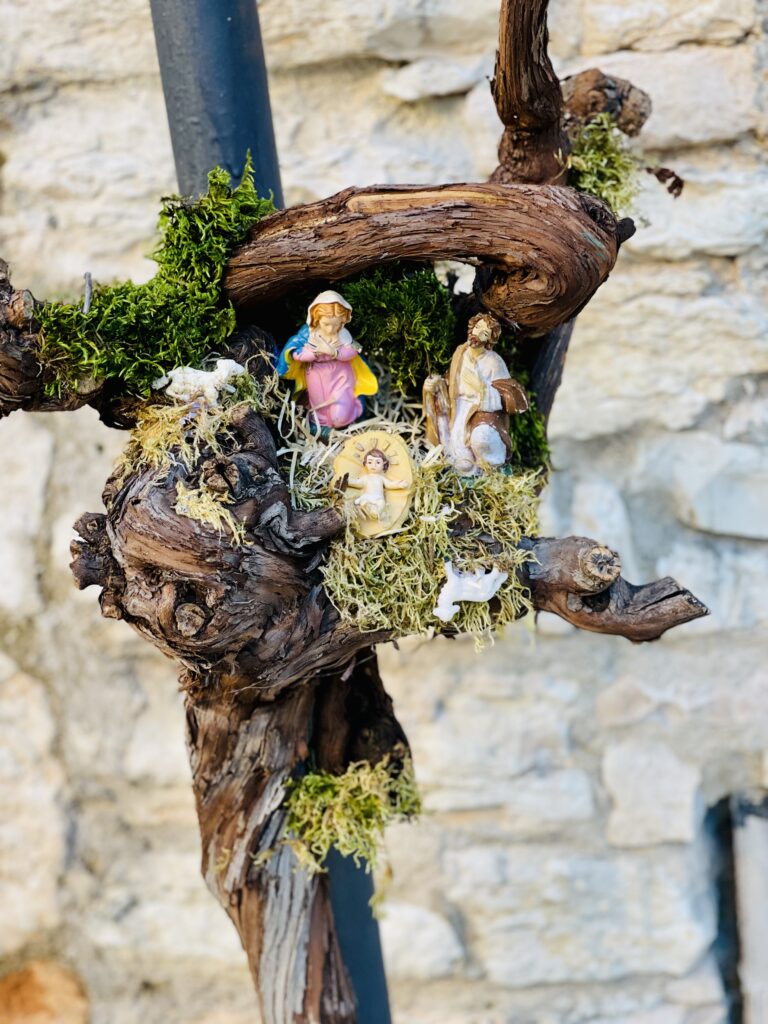
Saint Francis and the First Living Nativity
Saint Francis of Assisi played a huge role in spreading the presepio tradition. In 1223, he staged the first living nativity scene in Greccio. His goal was to make the story of Jesus’s birth more real and understandable. This moment was crucial for modern presepi, changing how Christmas was celebrated in Italy. Over time, these displays became more artistic and involved more community participation, making presepio a key part of Italian culture.
Understanding the Components of a Presepio
Diving into the world of presepio sets opens up a rich tradition. At the heart of each set are the nativity figures. They show different parts of the Christmas story. Each one is made with care.
Main Figures in a Presepio Set
The key parts of a presepio are its figures, bringing the scene to life. Every character tells part of the story. You’ll usually see:
- Holy Family: Mary, Joseph, and Baby Jesus are central.
- Angels: They show the divine watching over the nativity.
- Shepherds and their flocks: They show humble witnesses of Christ’s birth.
- The Magi: They honor Jesus as a king.
- Local Characters: Like the Monk and the Harlot, they mix sacred and worldly symbols from Neapolitan traditions.
Every character in the nativity scene wears outfits based on history and local fashion. This adds realness and depth.
Craftsmanship and Materials Used
Generations of artisans have crafted these scenes, using various materials. You’ll often find the following used:
| Material | Description |
|---|---|
| Wood | Used for larger figures and structures, carved in detail. |
| Ceramic | It’s durable and colorful, perfect for lifelike figures. |
| Cartapesta (Papier-mâché) | It’s light and flexible, great for fine details. |
| Fabrics | Clothes the figures with texture and color, showing cultural fashion. |
| Terracotta | Adds a rustic look, common in traditional setups. |
The care in preparing these materials results in stunning presepi. Every piece shows local style and cultural richness. This invites you to dive into the scene’s beauty.
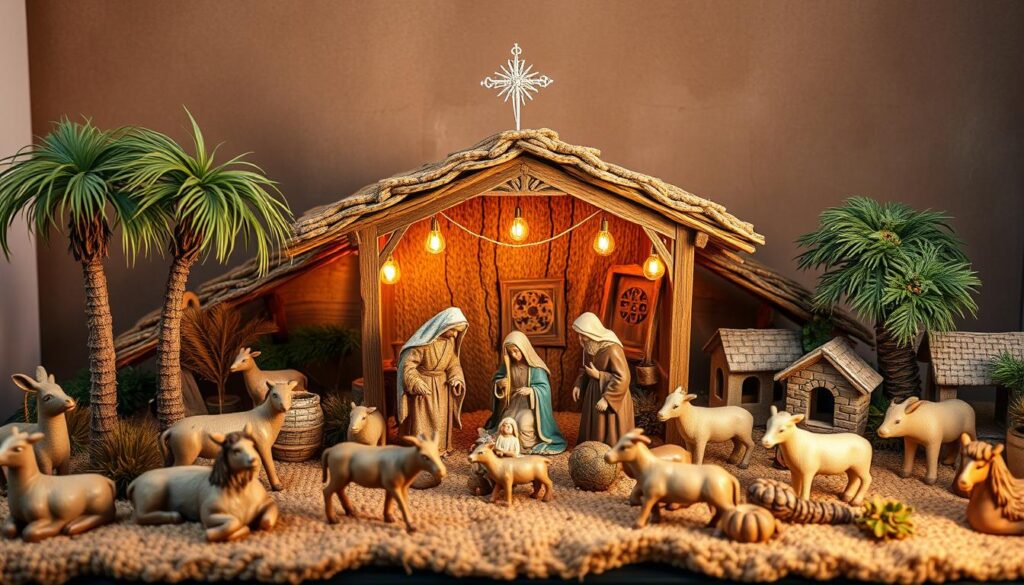
Regional Variations of Presepio Sets Across Italy
Exploring the regional presepi styles across Italy is fascinating. It shows how local customs and cultural influences shape Italian Nativity traditions. Each area has its unique take on the Nativity scene. This variety reflects deep-rooted values and histories. From Naples’ intricate designs to Tuscany’s rustic charm, these differences enrich the festive season.
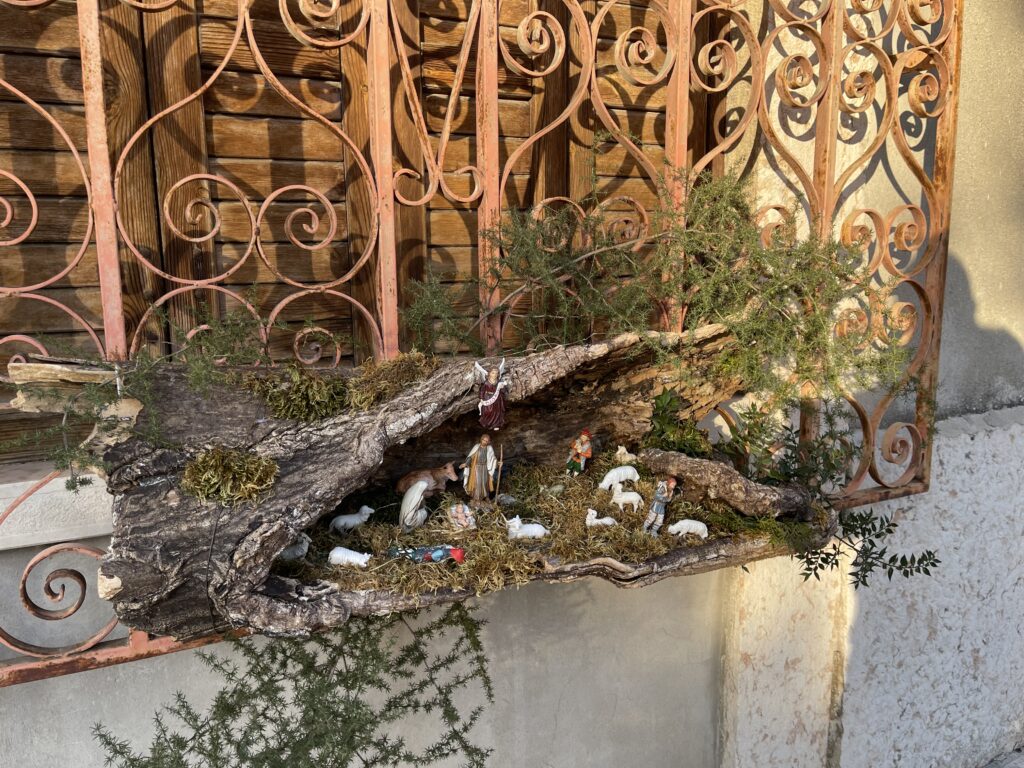
Local Customs and Cultural Influence
In Italy, the presepio is more than a decoration. It represents local traditions. In Sicily, the influence from Naples makes the presepi deeply religious, with sculptures around 20 inches. At the Church of St. Bartholomew near Ragusa, you can find the oldest presepio. It shows amazing craftsmanship. Meanwhile, Lecce is famous for its cartapesta figurines. These are made from hand-painted papier-mâché, showing the area’s artistic heritage.
Notable Regions with Unique Presepio Styles
Every region adds its own flair to Italy’s Nativity displays. Below are some regions and their special presepi styles:
| Region | Style | Characteristics |
|---|---|---|
| Naples | Neapolitan presepi | Intricate figures, dressed in real fabric, featuring various characters from contemporary culture |
| Sicily | Traditional Sicilian presepi | Wooden figures with pronounced religious themes, often featuring vibrant colors |
| Lecce | Cartapesta presepi | Handcrafted papier-mâché figures, highly detailed and designed to last |
| Trentino-Alto Adige | Wooden-carved presepi | Statues dating back to the 17th century, preserved in monasteries |
| Turin | Mechanical presepi | Over 200 moving pieces, showcasing the modern take on vivacious nativity scenes |
Besides these styles, many towns have the presepe vivente. Here, locals act out the Nativity scene. This keeps the tradition alive. Starting December 8th, you can see these displays in homes and public spaces. Every region’s unique presepio is a key part of Italian culture during the holidays.

Bringing the Presepio into Your Home
Adding a presepio to your home adds warmth and tells a story during the holidays. It’s important to think about the available space and your family’s style when setting up your presepio. You can choose from elaborate multi-level setups or simple arrangements to fit your space perfectly.
Choosing the Right Presepio Setup
Choosing the right presepio setup takes some thought. Often, the best ones feature detailed figures made of terracotta or wood from Naples. Families come together, with each member adding something special like miniature houses or lights. Mixing traditional and regional pieces makes your nativity unique.
Displaying Your Presepio for Maximum Impact
Displaying your nativity scene well can highlight its beauty and emotion. Try to create a Bethlehem-like setting with natural items like branches. Add ambient lighting and arrange the figures thoughtfully to draw people into the story. A well-organized display lets the nativity story stand out, encouraging reflection.
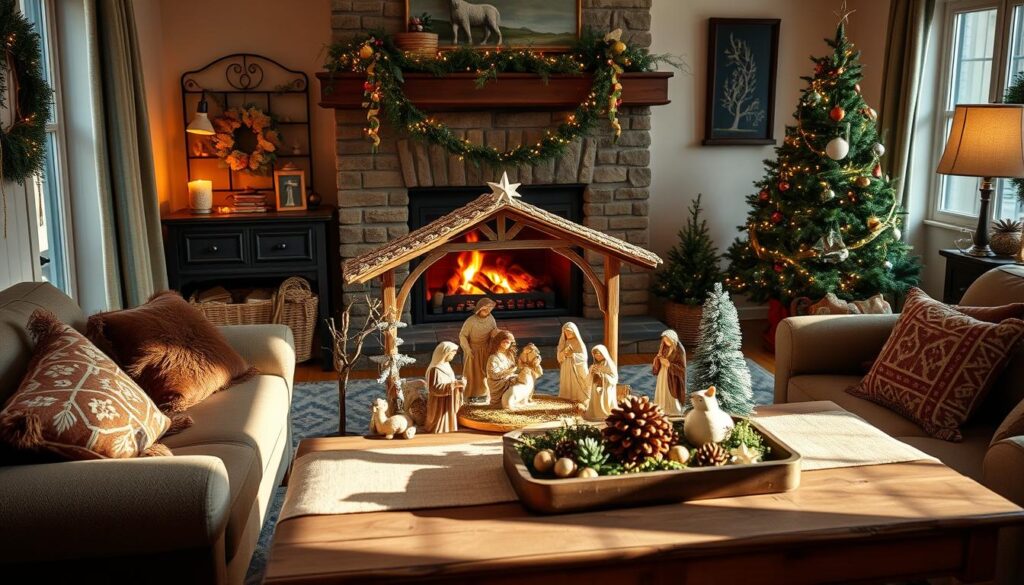
Experience the Living Nativity Scenes of Italy
Italy is full of living nativity scenes during the festive season. This period runs from early December to early January. These “presepi viventi” give visitors a chance to dive into the true spirit of Christmas. The tradition began with Saint Francis of Assisi, who set up the first scene in 1223. Since then, many famous nativity events have been inspired across Italy.
Famous Living Nativity Events to Visit
Matera is known for its accurate historical reenactments and draws people worldwide. Also, towns near Rome like Civita di Bagnoregio, Corchiano, and Tarquinia show detailed nativity displays. These events range from simple to detailed, with actors wearing clothes from that time and reenacting the Nativity.
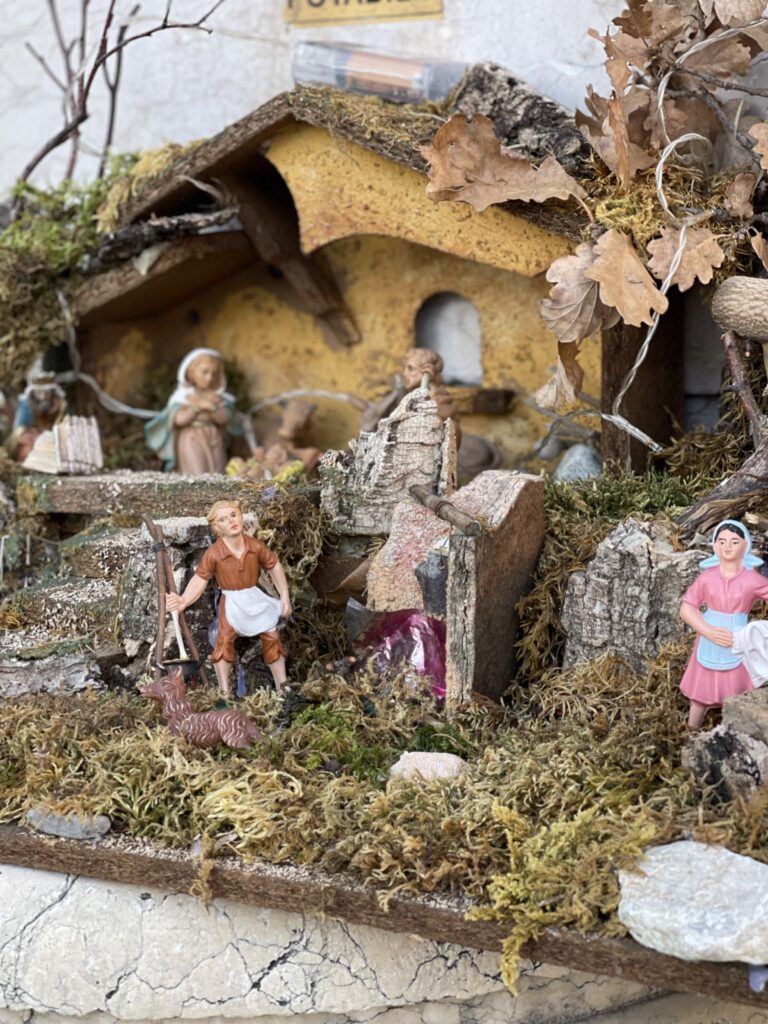
The Role of Community in these Celebrations
The community’s participation is key to these events’ success. Locals get involved by playing roles or setting up scenes. This not only brings people together but also helps keep their cultural heritage alive. Visitors often get to interact with the characters, making the experience more enjoyable during the holidays.
| Event | Location | Date(s) | Participants |
|---|---|---|---|
| San Biagio | Bagnolo San Vito | 31st Edition | Community Actors |
| Dogliani-Castello | Piedmont | 50th Edition | Local Residents |
| Matera Living Nativity | Matera | Throughout December | Dedicated Participants |
| Civita di Bagnoregio | Lazio | Dec 26, Jan 1, 6–8 | Community Involvement |
| Pietrelcina | Campania | Since 1987 | 200+ Participants |
| Living Nativity in Equi Terme | Tuscany | Seasonal | Various Actors |
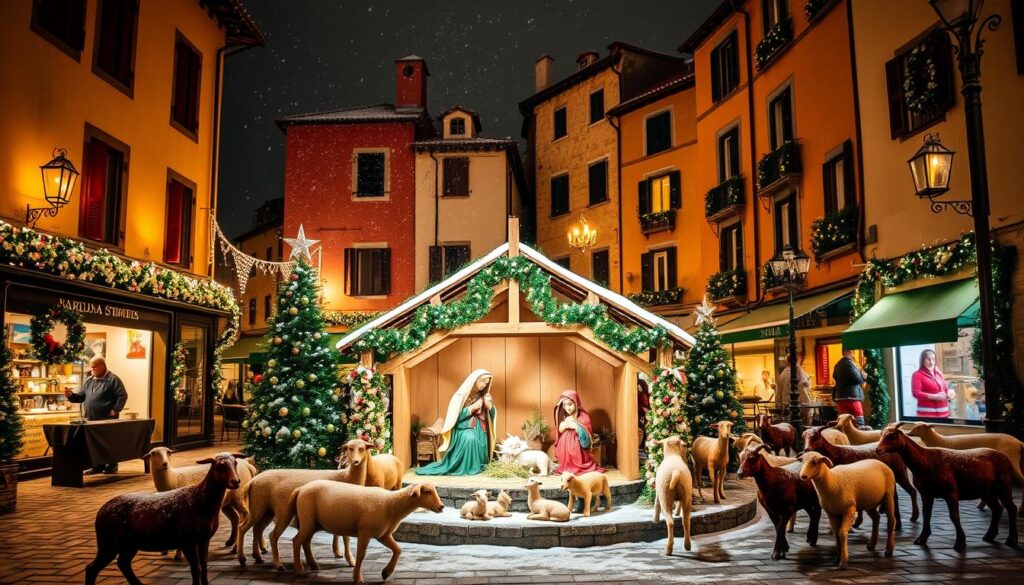
Embracing the Presepio Tradition During the Holidays
Setting up a presepio during the holidays enriches your home and spirit. It’s a cherished part of Christmas, bringing reflection and celebration. Each figure in the nativity scene connects us to holiday traditions and family conversations.
Engaging with the presepio boosts your Christmas spirit. It creates opportunities for storytelling and bonding.
How Presepio Sets Enhance Your Christmas Spirit
Presepio sets turn your home into a festive haven. They become the heart of gatherings, sparking joy. Families enjoy activities like setting up the presepio or crafting their figures together.
This shared activity strengthens family bonds. It deepens the appreciation of holiday traditions, boosting your Christmas spirit.
Sharing Traditions with Family and Friends
Gathering around the nativity scene brings everyone closer. It’s a time for storytelling and creating memories. These traditions celebrate Christmas essence and family ties.
Sharing this tradition emphasizes generosity and togetherness. It strengthens the bonds that make every holiday season special.
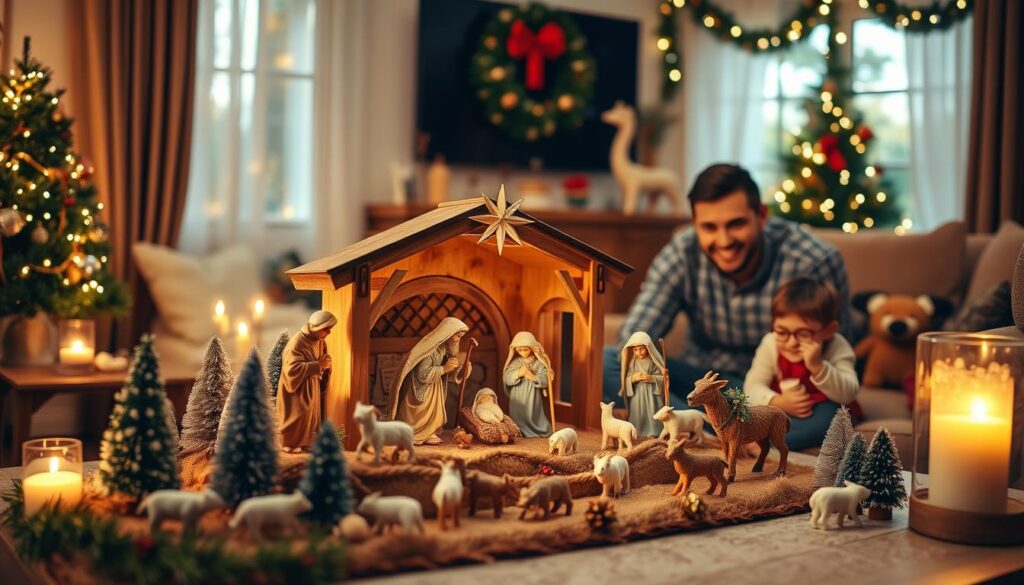
The Modern Interpretation of Presepio Sets
The world of presepio sets has evolved lately. Modern artists mix traditional nativity scenes with new styles and ideas. This blend of old and new brings the nativity’s spirit to more people.
Contemporary Artists and Their Creations
In places like Naples, artists make about 200,000 terracotta nativity figures each year. The San Gregorio Armeno area is home to around 40 workshops. They offer both detailed and affordable presepi for families around the world.
Adapting Traditional Elements for Today’s Homes
Modern presepio sets mix traditional parts with today’s looks. They use minimal designs and eco-friendly materials. This makes it easy to add a nativity scene to your home. These sets might include lights, water features, or moving parts. Adding them to your home keeps the nativity story alive in a way that fits your style.
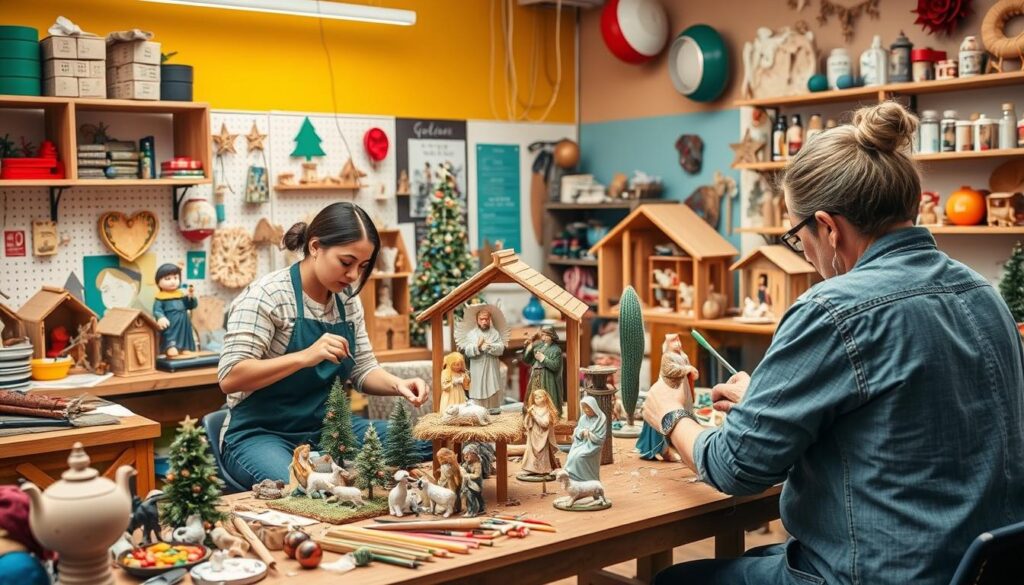
| Feature | Traditional Presepio | Modern Presepio |
|---|---|---|
| Materials Used | Wood, clay, natural fibers | Eco-friendly materials, terracotta, mixed media |
| Scale | Large, intricate setups | Compact, adaptable to small spaces |
| Lighting | Natural light, candles | LED, ambient light effects |
| Figures | Traditional cast of biblical characters | Varied figures from global cultures |
| Design Philosophy | Detailed religious storytelling | Artistic interpretation and personal expression |
How to Create Your Own Presepio
Making a DIY presepio is a special way to connect with tradition. You start by collecting different items. Mixing old elements like wood, straw, and cloth with recyclable things sparks creativity. It brings family members closer.
Gathering Materials for a DIY Presepio
Starting your nativity scene means making a list of materials:
- Wood for bases and figures
- Lightweight Styrofoam for creating landscapes
- Cardboard for structures
- Various fabrics to dress your figures
- Natural elements like straw and moss
- Crafting tools such as glue and scissors
- Paints for adding personal touches to figures
- Decorative items like pebbles and twigs
- Lighting elements to enhance the scene
- Optional figures or accessories for customization
Step-by-Step Guide to Building Your Presepio
To build your presepio, follow these steps:
- Select a sturdy base that can support your nativity scene.
- Create a background using painted cardboard or fabric to set the mood.
- Arrange your figures, starting with the stable, ensuring to position them in a way that tells the Nativity story.
- Add layers with trees, animals, and other elements to create depth.
- Use lights sparingly to draw attention to key areas.
- Encourage your family to personalize the setting with unique accessories each year, making it a continuous tradition.
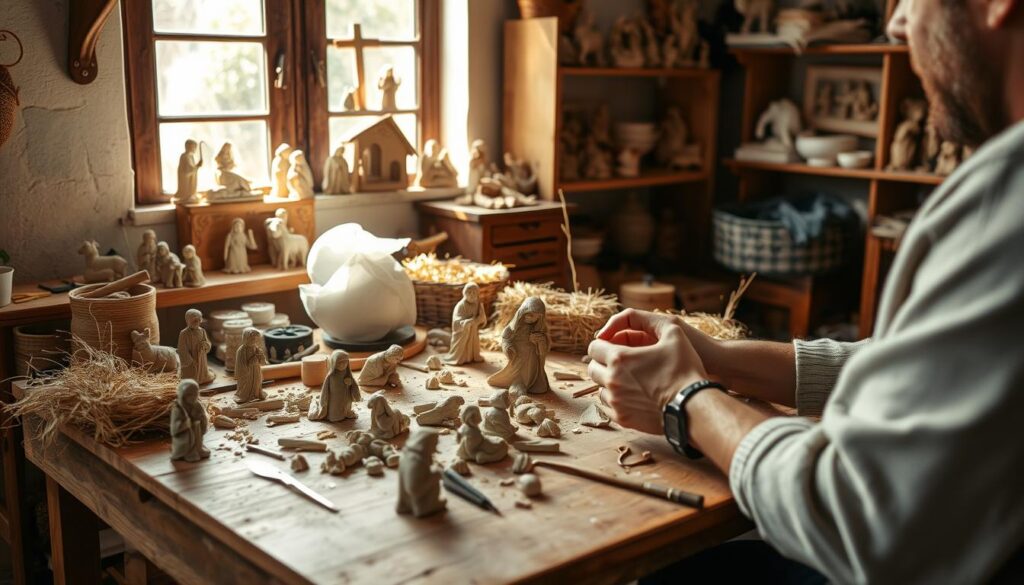
Making nativity scenes is fun because of the art and bonding time. Your DIY presepio will grow and change every year. It gets better with new ideas and materials.
Preserving and Maintaining Your Presepio Set
Taking good care of your presepio set is key to keeping it beautiful. You can share this special holiday tradition for years by following some tips. When cleaning, don’t use strong cleaners. Gently dust the figures instead. For storage, put the nativity figures in a cool, dry spot. This avoids damage from wetness or heat changes.
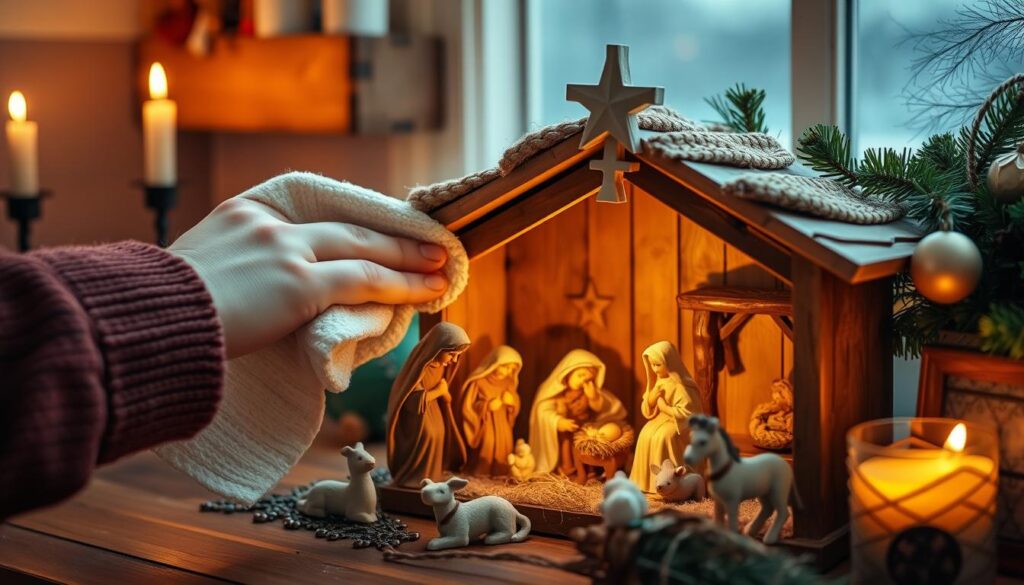
Best Practices for Care and Storage
Here are some tips to take care of your presepio:
- Use a microfiber cloth for dusting. This prevents scratches.
- Keep the set out of direct sunlight. Sunlight can make the colors fade.
- Store each figure in its own padded container to avoid breaking.
- Mark your storage boxes clearly. This makes it easier to set up your display each year.
Storing nativity figures correctly is vital. It keeps them in good shape and saves memories linked to each piece. Safe storage makes holiday setup more fun for your family.
Repairing and Restoring Vintage Presepio Items
Vintage presepio items are often very dear to us. It’s important to fix them carefully. Simple fixes, like gluing or painting, can revive these precious items. For serious damage, it’s best to get professional help. This way, we keep the item’s value and the stories it tells alive and clear.
Conclusion
Embracing the presepio tradition boosts your holiday spirit. It also connects you with the history and culture of these nativity scenes. By discovering the art in different presepio styles, you bring Italian heritage into your home.
Being part of community living nativity scenes or creating your own presepio makes Christmas more special for your family. Nativity scenes are more than decorations. They offer a chance for storytelling and family bonding, highlighting our cherished values during the holidays.
Sharing these traditions brings holiday joy and a feeling of unity that lasts through the years. Every time you gather around your presepio, it’s not just about celebrating Jesus’ birth. You’re also promoting love, creativity, and a spirit of community.
